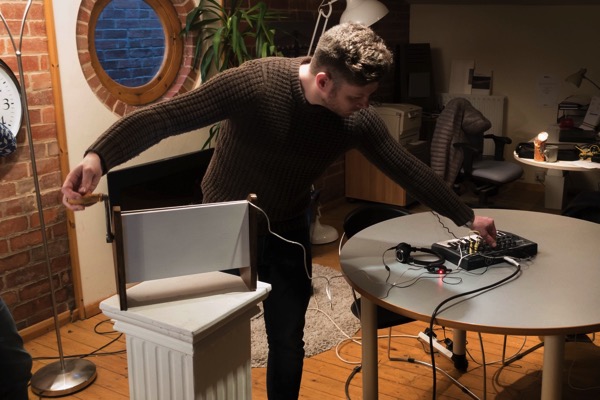Weeks 157-158
24 November 2015Two more weeks have pasted, which means two more weeks of contiguous weeknotes to write up.
I finished my first pass at Roshill – a puzzle I’m building for Oubliette Escape Rooms. Dave provided a second frontpanel for it, after the first had a few holes cut too small, and this one was much better. My new approach to wiring paid off, and by the end of Week 157 I’d wired the puzzle together and written most of the microcontoller code. I also met the mechanical engineer working on another critical part of the prop, and we worked out how we could piece our work together. There’s a second pass of work to come, but everything’s in a really good state, and it’s nicely maintainable – very easy to swap out individual components if they fail, thanks to an awful lot of spade connectors I crimped on.
My PCBs I ordered for Walton arrived, so I set about assembling one. The good news is that the PCB broadly functions correctly: I’d read the datasheets correctly, and the custom parts I’d had to make from scratch in EAGLE were all entirely correct. However, there was a significant flaw in the circuit (mainly to do with how negative voltage behaves) and so I’m going to need to take a second pass; I made my learning smile and moved on. Fortunately, some debugging (ably assisted with insight from James) solved the main issue.
I also took the opportunity to lasercut another frontpanel for that project. This too had some issues, largely down to my design process. I’ve resolved those by finding a workflow to get from EAGLE to SVG – namely, using the handy gerber2svg, which does exactly what you might think, and has the added bonus of being a command-lne tool. That’s all helped me have 100% confidence in the frontpanels from here on out. By the end of week 158, I had a second design of the PCB with the error corrected that was just about ready to send off for manufacture – although I have a sneaky feeling some last-minute tweaks (or even functionality) might be added before then.
Selworthy is gearing up to be handed over to new developers and deployed; I’ve been reviewing how some of its dependencies are packaged, and building out a secondary command-line tool to support it.

Most excitingly, I went up to Richard’s studio in Belper for a day of playing with Twinklr, filming and photographing it to document the end of the first phase of the project. It was by all measures a success; we got done what needed doing, but, more importantly, we lost ourselves in it. It was a joy to watch Richard just playing this instrument we’d built. After we had fixed a few minor issues and demonstrated basic functionality, we then plugged Twinklr into an analogue synthesizer I’d taken up, and thence into a long effects chain. And then I just watched as Richard explored and composed, writing patterns and melodies on Twinklr that played out on the synth, and the time just passed. A really good couple of days; I’m looking forward to sharing this project more properly with you in the immediate future.